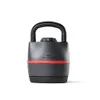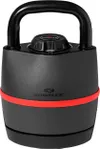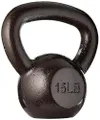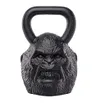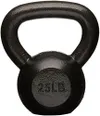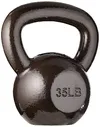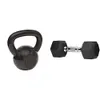I did 50 kettlebell upright rows every day for a week — here’s what happened
This is one for building the shoulders and upper back muscles
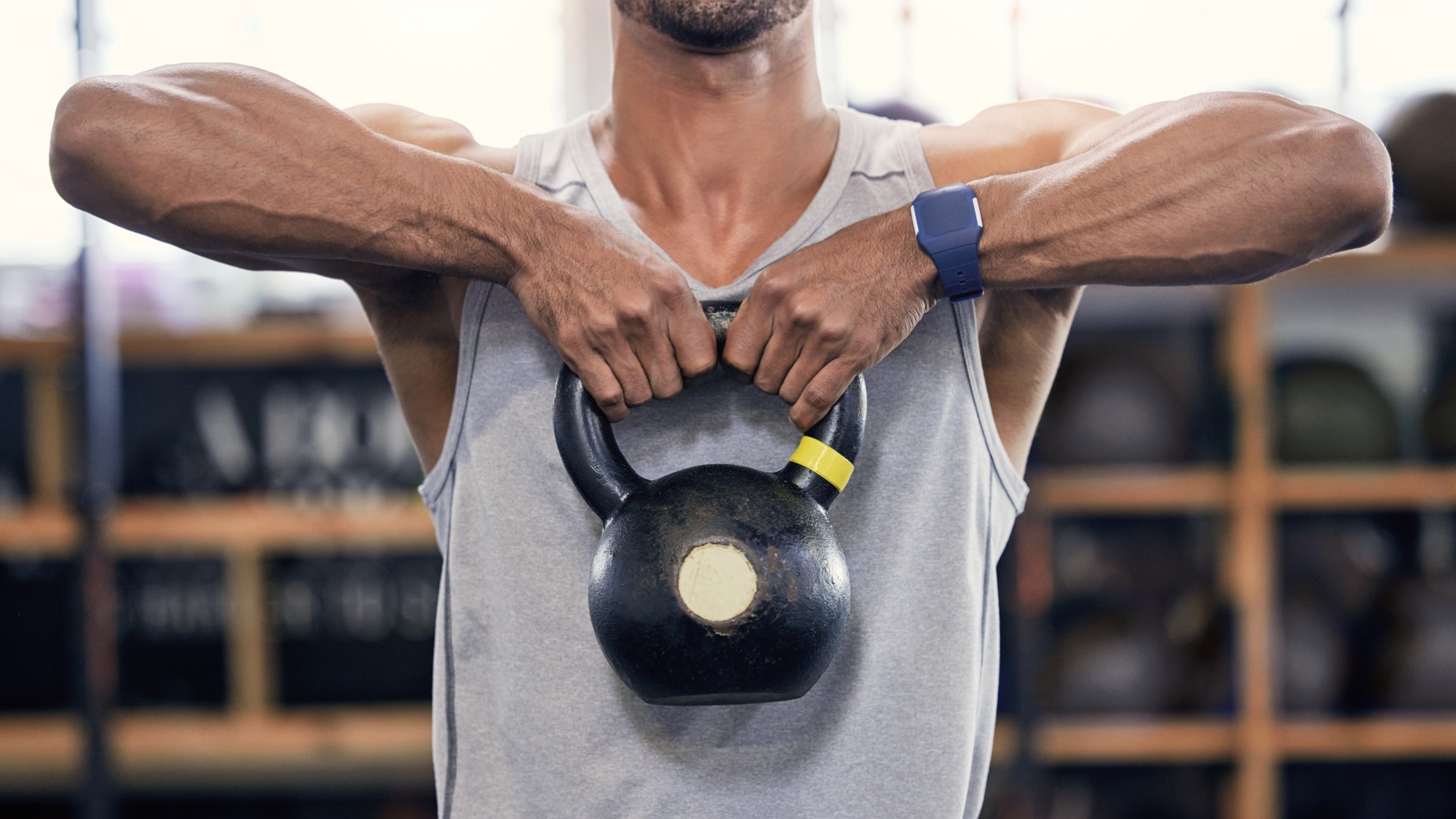
Upper body strength training has taken a bit of a back burner in my exercise regime as of late — that was until I decided to dust off my kettlebell and get to know the upright row exercise a little better. Kettlebell upright rows are designed to target the shoulders and upper back muscles. So if you’re looking to improve your upper body strength and build some muscle, then this is a move for you.
You can perform upright rows with a barbell, a pair of dumbbells or use one of the best kettlebells. I decided to work with a kettlebell as this is the only type of weight I own at home. For reference, I used the Bowflex SelectTech 840 Kettlebell for this challenge which is an adjustable kettlebell. If you are eager to try out upright rows, just make sure you are comfortable handling the style of weight you choose to do this exercise with and seek out assistance from a trainer if you are new to training with weights.
The upper body resistance exercise offers a versatile and effective way to build upper body strength and muscle mass and can also improve shoulder mobility and stability. Here’s what happened when I performed them every day for a week.
How to do kettlebell upright rows
- Stand with your feet hip-width apart, holding a kettlebell in front of your thighs with an overhand grip.
- Slowly lift the kettlebell towards your chin by bending your elbows and keeping them close to your body.
- As you lift the kettlebell, squeeze your shoulder blades together at the top of the movement.
- Pause at the top of the movement, then slowly lower the kettlebell back down to the starting position.
I did 50 kettlebell upright rows every day for a week — here’s what happened to my body
It's essential to emphasize that this intensive approach was not intended as a sustainable long-term fitness plan and we don't recommend you take this approach with your own fitness journey. The challenge allowed me to single out this exercise and assess how my body responded to it. Here’s what I found…
It’s an efficient upper body move
I have mentioned before on Tom’s Guide that I favor lower body sessions over upper body sessions and when I do have an upper body day at the gym I try to make it as efficient as possible. This is why on day one of doing upright rows I quickly decided that I liked them. Kettlebell upright rows target the deltoid muscles, located in the shoulders. In addition to sculpting shoulder strength, upright rows also engage key muscle groups in the middle and upper back, specifically the trapezius and rhomboids.
You could easily form a full upper body workout just using a kettlebell and a manageable number of sets and reps to work with. Alongside the kettlebell upright rows, you could add your kettlebell to the following moves: shoulder press, bent over rows, bicep curls, and lateral raises. Or check out this coach’s three best kettlebell exercises for chiseling back and biceps muscles. Not every good upper body pump requires multiple different weights and machines.
It can benefit grip strength
Holding onto the kettlebell while performing upright rows emphasized my grip strength, which has held me back with certain exercises in the past. Last year I was keen to master pull-ups and spent a lot of time on the pull-up assist machine. While my overall upper body strength could have been better, it also was clear that I needed to improve my grip strength to maintain a secure hold on the pull-up bar.
Sign up to get the BEST of Tom's Guide direct to your inbox.
Get instant access to breaking news, the hottest reviews, great deals and helpful tips.
Thankfully, kettlebell upright rows can help with this. One bonus about doing this exercise with a kettlebell is that my hands didn’t develop calluses on the palms of my hands. This is something that I typically suffer from when I am lifting with a barbell or when using a pull-up bar.
They hurt
It came as no surprise, that of course my upper body muscles started to feel the reps more and more throughout the week. I felt pain when lifting my bike down the stairs of my apartment building or when I pulled a jumper over my head. By day three of the week, I was wishing away the reps when I came to pump out another 50 upright rows. Luckily, I was working with an adjustable kettlebell so I could make the weight lighter.
However, if you’re using this exercise in a structured fitness routine then you will be working with a more normal rep pattern and will instead be able to increase the weight gradually. This is known as progressive overload and is a great way to promote strength gains and muscle growth.
Verdict
Will I be looking to keep up with completing 50 kettlebell upright rows? No. Will I add upright rows into my future upper body sessions? Yes, I will.
Kettlebell upright rows offer an effective way to strengthen the muscles of the shoulders and upper back. The exercise also engages the muscles of the hands, enhancing grip strength. So it’s an exercise that can improve your performance in the gym and help out in everyday activities such as lifting groceries, carrying bags, and performing household chores like lifting and moving furniture.
More from Tom's Guide
- What are the 'big 5' compound lifts in weight training?
- You can work out for free using your Samsung TV right now — here’s how
- Forget crunches — this 6-move dumbbell workout strengthens your core and builds full-body muscle

Jessica has been a fitness writer at Tom’s Guide since 2023, bringing three years of experience writing about health, fitness, and the great outdoors. Her passion for exercise began during her childhood, where she spent weekends hiking and competing in local athletics club events. After earning a master’s degree in journalism from Cardiff University, Jessica found the perfect way to combine her love of storytelling and fitness into a career.
Jessica is passionate about testing fitness gear and tech, using her reviews to help readers make informed buying decisions. She ran her first marathon in April 2024, finishing it in 3 hours and 48 minutes. Through her training, she’s developed a deep understanding of what it takes to grow as a runner, from effective workouts and recovery techniques to selecting the right gear for every challenge.
When she’s not at her desk, Jessica enjoys spending time in the kitchen crafting new recipes, braving cold water swims and hiking.
